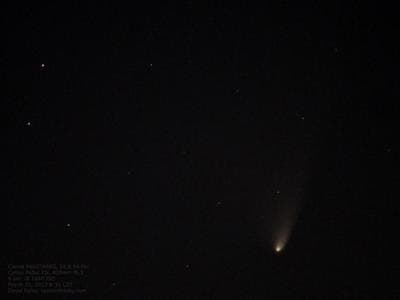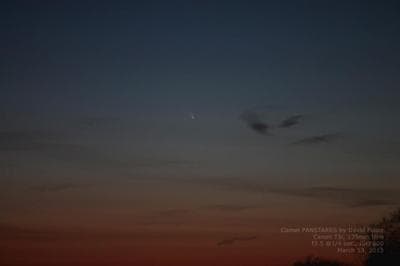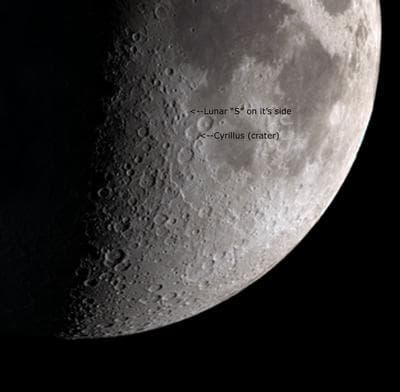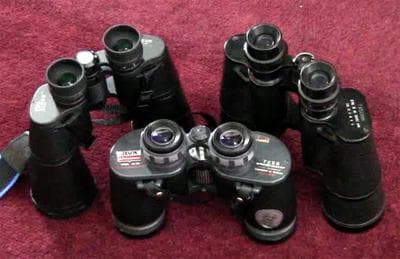
Eyes on the Sky
with David Fuller
with David Fuller
Astronomy Articles
PANSTARRS high-tailing it
David Fuller — March 26, 2013Late last week I was able to get a few more pictures of Comet PANSTARRS. The one immediately below, taken by me, shows the comet on the 21st. I did a little processing, but not much - mostly just some contrast. However, as I was playing with the contrast, I notice something about the comet's tail. There's more there than meets the eye.Hop 1, 2, 3 for M67
David Fuller — March 25, 2013Messier 67 gets no respect. It's the smaller open cluster in Cancer the Crab, always overshadowed by the more impressive Messier 44 (clearly, as Charles Messier himself even wrote down the Beehive as an "object" to round out his initial list before ever spotting M67). But that doesn't mean it's not worth viewing.Comet PANSTARRS makes a point... the other way
David Fuller — March 20, 2013When comets orbit the sun, if they create a tail, it generally points away from the Sun. On March 13, I caught a picture of the comet, with it's ~1.5 degree tail aimed slightly towards the south. Last night the equation changed.The Lunar "S" feature
David Fuller — March 18, 2013The lunar "S" is a feature on the Moon visible at the right phase and time. It can be seen near some prominent craters. Here's where to look.Choosing binoculars for astronomy
David Fuller — December 04, 2012Binoculars for astronomy are best when they provide a low magnification, wide field of view. In addition to providing a substantial exit pupil of light leaving the eyepiece, when chosen at a weight of two pounds or less with fully coated surfaces, they can provide substantially more light reaching the user's eyes and assist in observing wide fields of much fainter objects than the naked eye can see.




